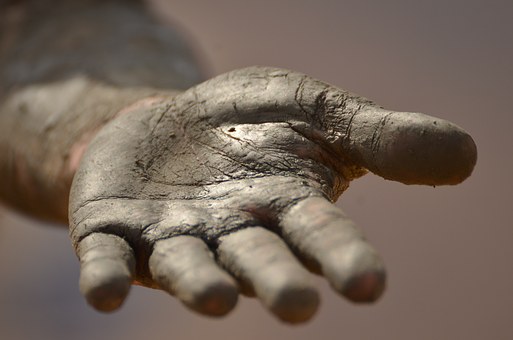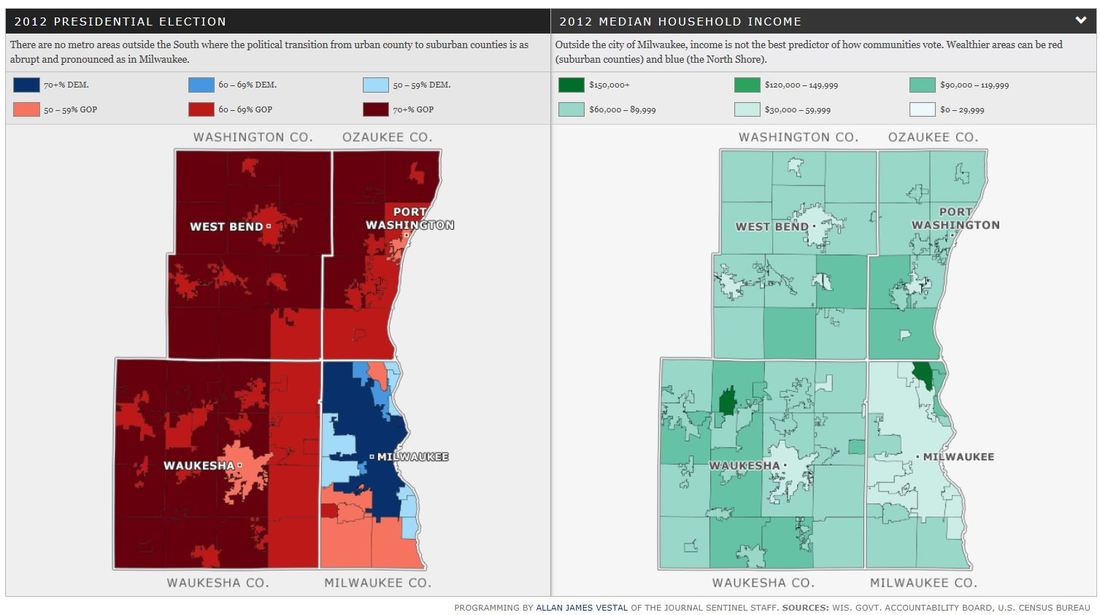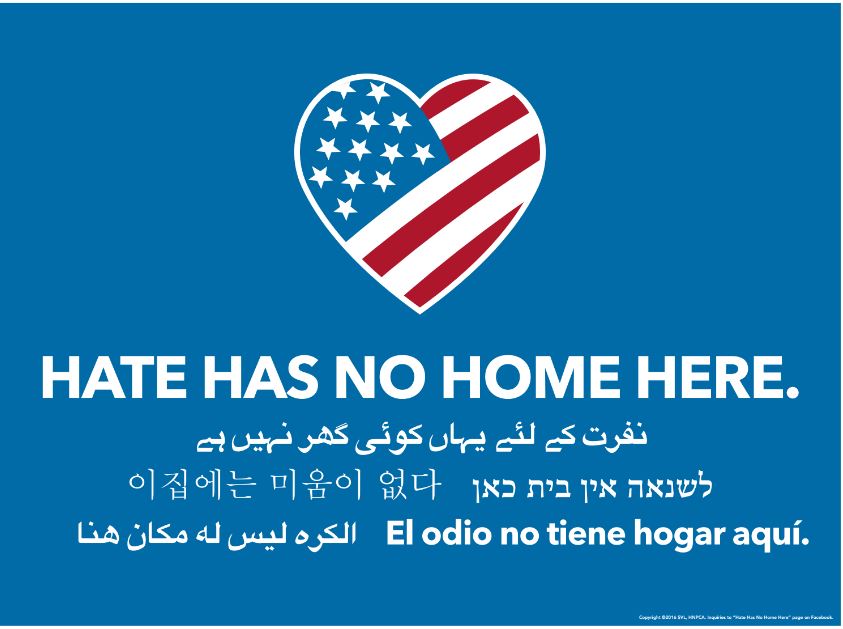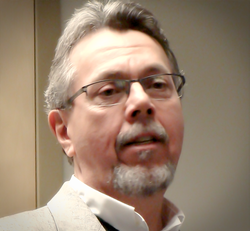Perhaps the best we can do is let them know they are loved and that they are not alone. I don’t know if it is just me and where I am in the stage of my life, but there does seem to be a significant number of people in my circle who are dealing with an awful lot of pain. A sister-in-law who died too young, a husband just diagnosed with prostate cancer, A son addicted to opioids, a young relative with renal failure, a husband imprisoned; these are some but not all of the stories our family has heard from those who are in such angst and pain.
I understand that pain is an inherent part of living, but there seems to be an awful lot of it out there at this particular time. Maybe I’m just more attuned to it; more open to hearing about people’s struggles. Or, perhaps people are opening up more, allowing themselves to become more vulnerable. Or just maybe, the pain has become unbearable and more people are reaching out for comfort from family and friends. I don’t know the answer as to why there are more stories of struggle surrounding me now. When I hear these stories, I feel compelled to help in some way. Telling someone “I’ll pray for you” doesn’t seem to be enough. Of course, I pray for them. I pray that they will have the strength to deal with their hurt, that they will find a way through, that they will eventually find peace in their life. I have come to learn that there are things I must avoid when dealing with a grieving friend and some actions I can take that may help. Here are a few of the main ones: Don’t Make It About Me - I refrain from telling my friends how something similar happened to me and then explain how I dealt with it. I know enough that when people share their pain, I shouldn’t try to turn their story around to be about me. It’s Not About Some Cosmic Plan – I cringe every time I see a person in turmoil and a well-meaning friend tells them that everything will work out because God has a plan; that everything happens for a reason. I just don’t think that’s true and more to the point, I don’t think that is particularly helpful for the person seeking comfort. I do believe that God calls us many times during our life. I don’t believe that he puts obstacles in our path or causes us to experience heartbreak or pain in order to teach us a lesson. Sometimes - most times - life just happens. And when it does, God is there to help us pick up the pieces. But he is not there to intervene. Don’t Try to Fix Everything – This is something I used to be especially guilty of doing. When someone was hurting, I would do anything I could to try to take their pain away. I would give them advice on how to deal with their grief by suggesting they retreat to nature, that they surround themselves with friends, that they go to counseling, that they exercise more. You get the picture. I wasn’t really listening to them and trying to hear their deep seeded needs. I was trying to help them simply mask their pain. Truth be told, I was also trying to mask my own pain and sense of inadequacy in these situations. Listen Deeply – Most times when a friend reaches out, all they really want is someone to talk with, someone that will listen as they process how they feel and what they should do. The Quakers believe that each person has an inherent wisdom deep within them and the role of any friend is – at best – to ask open ended questions that will help them find their own way. This is a uniquely empowering way to help a friend move through their grief and turmoil. Stay Connected – People need time to grieve. They need time to find their own path through what it is they are dealing with. But, they also need friends. Too many times we hear from cancer patients or those who have lost a spouse or loved one that their friends tended to shy away; that they felt isolated. The most loving thing we can do is to reach out and let them know they are welcome to come to dinner, to come to a birthday party, to come to hang out. Whatever it is – just offer the opportunity to connect. And then keep offering. I am struck by the image of Jesus on the cross. There he was, humiliated, dying and in excruciating physical and emotional pain. What did he see below him at the foot of the cross? There was his mother and his aunt, his ardent supporter Mary Magdalene and one apostle, John. They couldn’t help him. They couldn’t ease his pain. All they could do was stand there and let him know that he was loved and that he was not alone. That’s the best that any of us can do.
0 Comments
"There are no complicating boundaries with God. Only the ones we construct." We live in a world where our boundaries define us. I am basically an introverted person and as a result have a relatively large personal boundary which I don’t like being invaded by others. Some people are comfortable standing within inches of your face and talking to you. I find that very uncomfortable. I understand, that is one of my boundary issues.
Think of all the political boundaries we find in Wisconsin. Some folks who don’t live here (another boundary) shake their heads at the number of towns and townships and municipalities and wonder how anyone can keep all this straight. Southeastern Wisconsin is famous for the fact that we are one of the few places in the United States where our voting patterns clearly follow the boundaries for units of government. If you review a map from Marquette University data for the 2012 presidential election, you can clearly see the boundary between Milwaukee and Waukesha counties by looking at nothing other than voting records. Think about that for a moment. Our county boundary also starkly demarks the voting boundary between Democrat and Republican voters in the region. The same can be said by looking at race and income data. When you meet someone who is Hispanic and who lives in the region, you can probably guess correctly in which zip code their home is located. I think that is unjust, but I also believe it is true that unfortunately, race and geography coincide in this region. That is equally true for income. It is not by accident that 73% of all people who are poor in the four-county region reside in the city of Milwaukee. And so, by many measures our boundaries help to define who we are, how we identify and where we live. Here is an exercise: Look at the maps at the top of this blog. Now, in your mind take out a big red marker and draw the boundaries dividing the region as if through the eyes of God. Where would God begin drawing boundaries here? Where do you see any red lines? I would have to put my red marker down and just ponder the idea that with God – there are no boundaries. There are no red lines dividing us. God doesn’t care what race or nationality you are, in what zip code you live, how much money you make or for whom you voted in the last election. Here is a deeper question to ponder: Is there a boundary between you and God? If so, is the boundary something you created? Do you think God sees a boundary between you and him? I used to think that I was just this human fellow living my life on earth and God was somewhere “out there” and mostly judging me for things I did or even thought about doing which were wrong. I don’t believe that anymore. As I have said before, I am a Quaker and believe there is “that of God within each of us.” There is no boundary between me and God. I think about it like this: I recently took an Ancestry DNA test to find out my DNA heritage. I’m 45% Italian and Greek; 43% East European, 6% West Asian (Middle Eastern) and a smattering of others, including 1% Finnish. Now, there are no boundaries in these nationalities that make up me. It is just all me. I think it’s the same with God inside of me. There are no boundaries between God and me, there is just God who is a part of me. In the final analysis, the only boundaries we have are those we’ve constructed; some to simplify our lives and others that complicate them. There are no complicating boundaries with God, only the ones we construct. "The antidote to hate is not love. A Chicago neighborhood group has started a yard sign campaign that I’m going to join. The yard sign (depicted in the above picture) simply states: Hate Has No Home Here and does so in several languages. Getting the sign is a little bit cumbersome. You have to go to their website and download the artwork to a thumb drive. Then you have to take the thumb drive to a printer and have the sign printed. Ok, several steps – but worth the time and effort I think.
There are a couple of things I like about this. One, it makes a statement that our home won’t tolerate hate, bigotry or violence. Another is that it helps remind me that peace is more than a sign; it is a commitment to a lifestyle. If I have the sign in my yard, then I need to walk the talk. I must stand up to hate when I see it. I must speak up to bigotry when I’m around it. I must actively work against those who foster hate to advance a regressive political agenda. As the sign says, Hate Has No Home Here – but neither does complacency. If you choose to put this sign in your yard, then I beg you to not let that be all you do. Certainly, it is a good first step but it needs to be more than that. Put the sign in your yard and then…
We must be mindful that hate comes in all guises. I know people who think of themselves as “good Christians” but who “hate” Muslims or abortionists or illegal immigrants. I know good liberals who “hate” Donald Trump or his supporters. I know good Catholics who “hate” the current pope because he is too liberal. Part of this effort should be an examination of conscience to see whether each of us harbors hate in our hearts in ways and places to which we are blinded. I know that I often need to remind myself that certain politicians are really people who are loved by God but who have not yet found the way to hear God’s voice speaking from their heart. I must remind myself (sometimes daily) that I should be praying for them instead of hating them. And I do pray for them. I pray that their hearts and minds will become open to the whisper of God’s love and justice bubbling up from their soul. But I also work hard to oppose their policies; especially those that impact most the unprotected in our society. Hate Has No Home Here, but neither does complacency about the actions of hate or the impacts of hateful policies. The antidote to hate is not love. The antidote to hate is love in action. The dangers we ascribe to others are the same dangers embodied in ourselves. Building a wall won't protect us. It will only serve to further isolate us from the warmth and beauty of our gracious neighbors. I had the privilege recently to take a cultural immersion tour of the Baja peninsula of Mexico and I can say that the people I’ve met don’t in any way reflect the description of them depicted by Donald Trump and his supporters. What I have found is a people who embody a sense of faith, family and community.
In San Diego at the start of the tour, I attended a lecture on the border region of Tijuana and San Diego conducted by Dr. Norma Iglesias Prieto from the San Diego University Department of Chicana and Chicano Studies. She showed how over 130,000 people per day cross that vital border between the two countries, most of whom do so for work. Why? One reason is the fact that the average hourly wage in San Diego is $11.00 while in Tijuana it is fifty cents or $4.00 per day. It is becoming increasingly difficult to secure the documents needed to travel for work from Mexico to America, causing additional economic strain on an already stressed region. The American government plan to further complicate the border crossing will only exacerbate an already difficult situation for people whose main motivation is to improve the lives of their families. From San Diego, we traveled to the port city of Ensenada where it was Sunday; a day set aside for family. The museums and parks were open and free for families to visit. At the museum I toured, there was a play being performed for the children who sat in the audience close to the stage as their parents sat behind, watching with amusement as the children laughed and enjoyed a story of a prince and a princess. As I strolled along the boardwalk of Ensenada, I saw teems of families – grandparents, moms, dads and children - walking together, enjoying ice cream or stopping to listen to one of the several Mariachi bands playing in the park or on the a boardwalk. Next stop was Catavina, a tiny community of less than 200 people. In Catavina, there is only a one-room school for all children attending grades first - eighth, taught by a single teacher. We were introduced to three, eighth grade students who told us their plans for high school and beyond. One wanted to be a psychologist, another a veterinarian and the third a mechanic. We also learned about how the community bands together to ensure that every young girl can have her own, very special Quinceanera. This is only possible because the entire town chips in to help. One mom will help make the dress, several others will supply the food, other community members will play music and the church will donate the church hall for the event. No one family can afford this special rite of passage celebration for their daughter, but together, the entire community can ensure that no one is left out. In San Quintin, we learned about the Mexican Ejido. An Ejido (pronounced Eh-He-Doe) is a form of land cooperative instituted by the government at the end of the Mexican revolution in the early 1900’s. Community members identify land owned by the very rich which isn’t being put to productive use. These families can petition the government to allow them access to work the land and reap the benefits of their labor. The Ejido has been recently under attack, but it has also expanded beyond agriculture and now includes opportunities for Ejido members to take advantage of the growing Mexico tourism industry. For example, in La Bufadora there is a spot where the ocean will roar into a small passageway and then burst up over 30 feet into the air between a rock crevice. This has become a tourist attraction. An Ejido was established near this site and now, dozens of Ejido merchants line the street leading up to the blow hole selling crafts, food and other items the tourists may purchase. Without the Ejido, none of these families would have an opportunity to reap the benefits of the tourism dollars. In St. Ignacio, a town of about 1,000 people, there is a beautiful town square that is dominated by a Mission church, built in the late 1700s. There, we met a teacher who is working with middle school students and preparing them to compete in a state music competition. In order to help the students raise the money needed to attend the competition, the teacher travels from restaurant to restaurant, serenading customers and using the tips he receives to help defray the cost of the trip. Without the determination of this talented teacher, these children could never afford to attend this event which will most certainly expand their world view. One of the saddest encounters we had with the people of Mexico was in the tiny town of In Santa Rosalia. There, we were approached by a group of elementary school children, still in their school uniforms, who seemed to want to practice their English. They spoke halting English while our group was equally challenged in speaking Spanish. But through our combined efforts, we could communicate. What we learned – in this unsolicited conversation with the children – was that they were deeply troubled by the talk of America building a border wall, and they were disturbed over how their own country was being portrayed. These children live hundreds of miles from the American border, but that did not lessen the profound impact they felt from the deteriorating relationship between our two countries. Donald Trump depicts the Mexican people as “bad hombres”; as rapists, murderers and drug dealers. That is unfortunate. On my tour of this rugged Baja peninsula, I found only people with a warm and welcoming heart whose core values of faith, family and community were lived out in their daily interaction and in how they treat their guests and their neighbors. We say we want to build a wall along the Mexico border to protect America. But the dangers we ascribe to others are the same dangers we embody in ourselves. Building a wall won’t protect us, it will only serve to further isolate us from the warmth and beauty of our gracious neighbors. |
AuthorMichael Soika has been a community activist for more than 30 years working on issues of social and economic justice. His work for justice is anchored by his spiritual formation first as a Catholic and now as a Quaker. Archives
June 2018
Categories |





 RSS Feed
RSS Feed